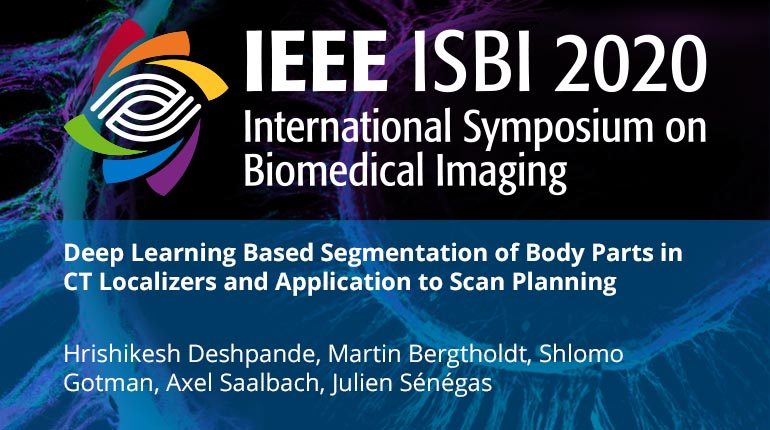
Already purchased this program?
Login to View
This video program is a part of the Premium package:
Deep Learning Based Segmentation of Body Parts in CT Localizers and Application to Scan Planning
- IEEE MemberUS $11.00
- Society MemberUS $0.00
- IEEE Student MemberUS $11.00
- Non-IEEE MemberUS $15.00
Deep Learning Based Segmentation of Body Parts in CT Localizers and Application to Scan Planning
In this paper, we propose a deep learning approach for the segmentation of body parts in computer tomography (CT) localizer images. Such images pose difficulties in the automatic image analysis on account of variable field-of-view, diverse patient positioning and image acquisition at low dose, but are of importance pertaining to their most prominent applications in scan planning and dose modulation. Following the success of deep learning technology in image segmentation applications, we investigate the use of a fully convolutional neural network architecture to achieve the segmentation of four anatomies: abdomen, chest, pelvis and brain. The method is further extended to generate plan boxes for individual as well as multiple combined anatomies, and compared against the existing techniques. The performance of the method is evaluated on 771 multi-site localizer images.
In this paper, we propose a deep learning approach for the segmentation of body parts in computer tomography (CT) localizer images. Such images pose difficulties in the automatic image analysis on account of variable field-of-view, diverse patient positioning and image acquisition at low dose, but are of importance pertaining to their most prominent applications in scan planning and dose modulation. Following the success of deep learning technology in image segmentation applications, we investigate the use of a fully convolutional neural network architecture to achieve the segmentation of four anatomies: abdomen, chest, pelvis and brain. The method is further extended to generate plan boxes for individual as well as multiple combined anatomies, and compared against the existing techniques. The performance of the method is evaluated on 771 multi-site localizer images.
 Cart
Cart Create Account
Create Account Sign In
Sign In





